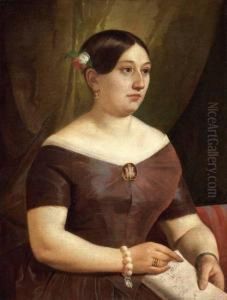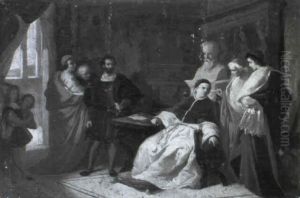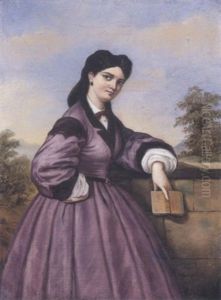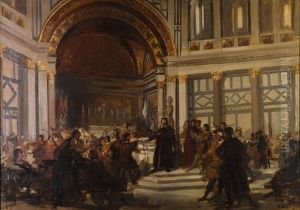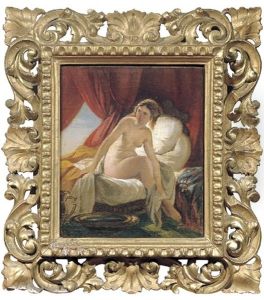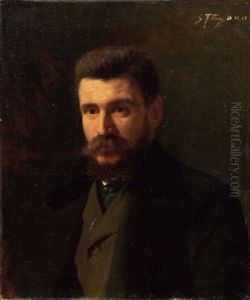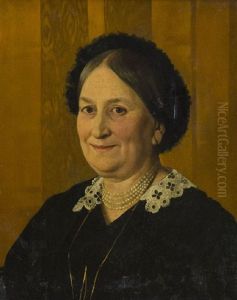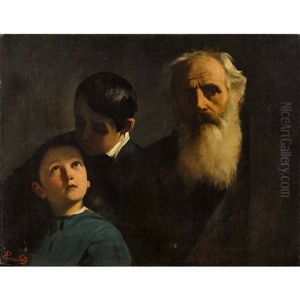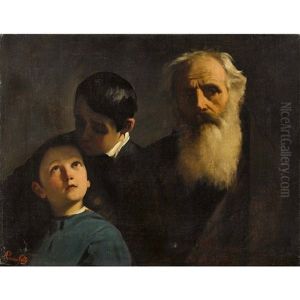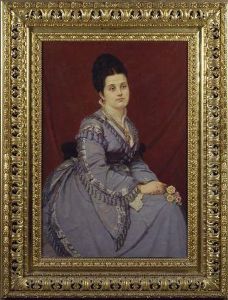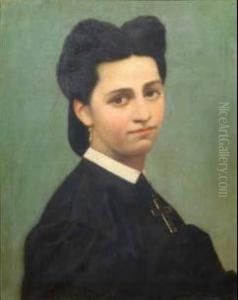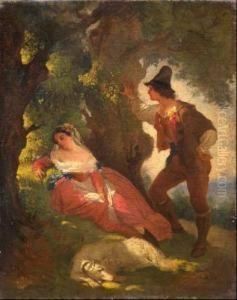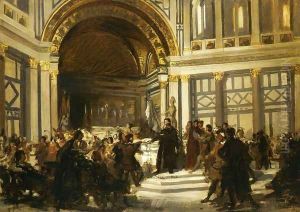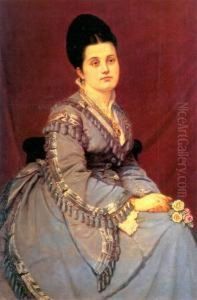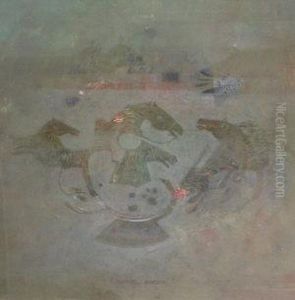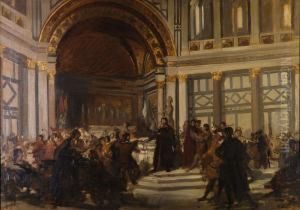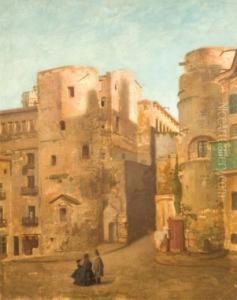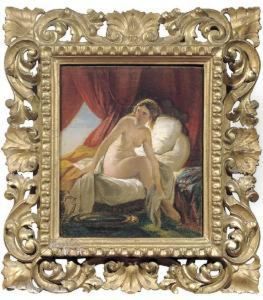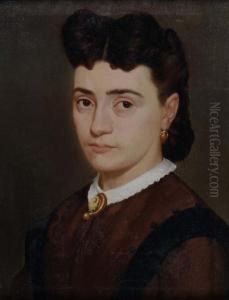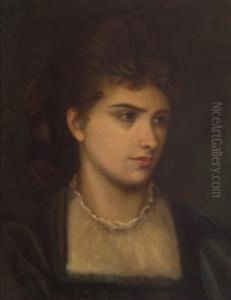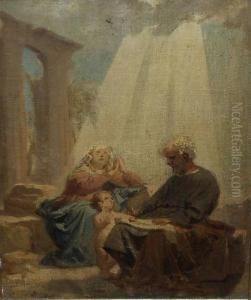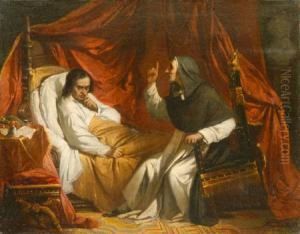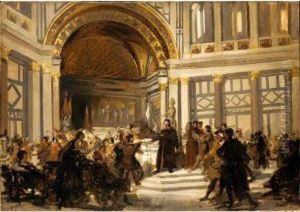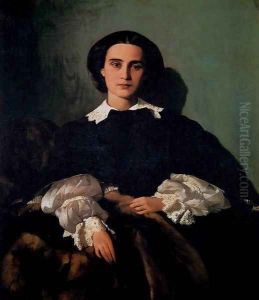Antonio Puccinelli Paintings
Antonio Puccinelli was an Italian painter, born in 1822 in the town of Castelfranco di Sotto, in the Tuscany region. He is considered one of the prominent figures in 19th-century Italian art, particularly known for his contributions to the Romantic and later, to some extent, the Realist movements. Puccinelli's early life was marked by a passion for art, leading him to pursue his studies at the Academy of Fine Arts in Florence. There, he was influenced by the works of the Italian masters and began to develop his distinctive style, characterized by a focus on historical and mythological themes, imbued with a romantic sensibility.
His career took a significant turn when he was awarded a scholarship to study in Rome, a pivotal experience that exposed him to the Renaissance masters and the burgeoning Romantic movement in art. This period was crucial in shaping Puccinelli's artistic direction, as he began to blend the classical techniques he admired with the emotional depth and dynamism of Romanticism. His works from this era show a remarkable sensitivity to light and color, and a preference for dramatic, often melancholic subjects.
Throughout the mid to late 19th century, Antonio Puccinelli enjoyed considerable success and recognition for his work. He participated in numerous exhibitions and received commissions from both private clients and public institutions. Among his most celebrated works are his historical paintings, which not only demonstrate his technical skill but also his ability to convey powerful narratives and evoke emotional responses from the viewer.
In addition to his historical and mythological paintings, Puccinelli also produced portraits, landscapes, and religious works, showcasing his versatility as an artist. His approach to these genres often reflected his romantic inclinations, with a focus on the beauty of the natural world and the complexity of human emotions.
Antonio Puccinelli's contribution to Italian art was recognized by his contemporaries, and he was admired for his ability to blend classical traditions with the modern sensibilities of his time. Despite this, after his death in 1897, his work was somewhat overshadowed by the emergence of new artistic movements. However, in recent years, there has been a renewed interest in Puccinelli's oeuvre, with art historians and collectors alike appreciating the depth and breadth of his work.
Puccinelli's legacy is that of an artist who bridged the gap between the old and the new, infusing the classical subjects he cherished with a fresh, emotional vitality. His paintings continue to be studied and admired for their beauty, technical mastery, and emotional depth, securing his place in the annals of 19th-century Italian art.
